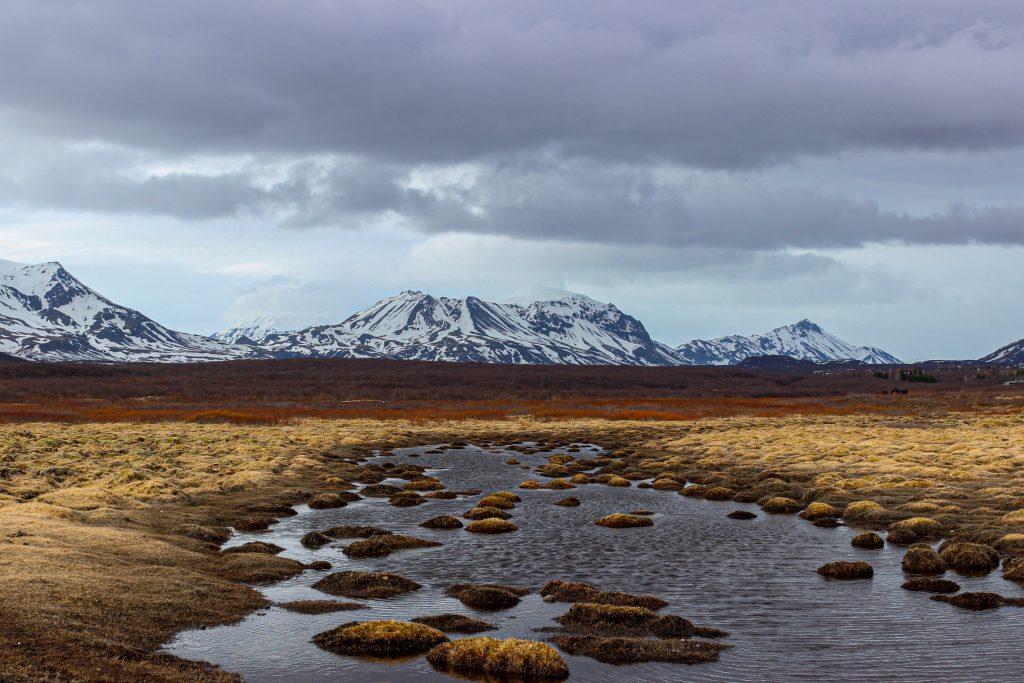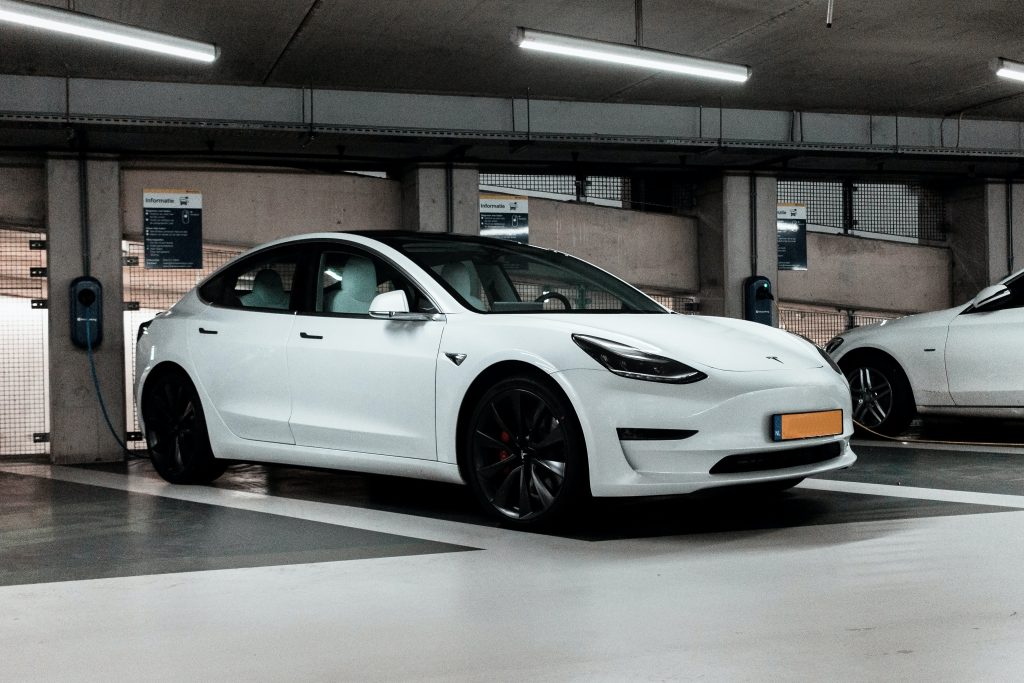🦃 Thanksgiving week…This year spend some time buying some black friday deals from sustainable brands and some climate startups if possible! You’ve met a lot of new ones through The Impact so check out if they have a product or service you can buy.
THE TL;DR 💨
💰 The Fund Betting on Technologies That Have Derisked Since CleanTech 1.0
- Energy Transition Ventures (ETV) is a new climate venture fund dedicated to investing in and advancing technologies directly impacting the shift towards a clean energy future
- Energy Transition Ventures believes that there is no single formula for startups and companies
🌱 Out on the Arctic Frontier: Exploring Pleistocene Park’s Attempt at Rewilding the Tundra
- A re-wilding experiment in the Arctic that seeks to convert the current Tundra ecosystem to a grassland ecosystem
- Viability of the project and its potential impact on global climate
🚗 Electric Vehicles – If It Doesn’t Make Dollars, it Doesn’t Make Sense
- The only way to move forward in mitigating climate change is by making technologies economically viable
- Exploring the economics of buying an electric vehicle today
💸 VC DEEP DIVE
The Fund Betting on Technologies That Have Derisked Since CleanTech 1.0
By Matt Morris • is a Senior Associate with ADL Ventures and has an extensive network amongst the climate and deeptech communities, specializing in materials and manufacturing.

Energy Transition Ventures (ETV) is a new climate venture fund dedicated to investing in and advancing technologies directly impacting the shift towards a clean energy future. ETV focuses on five major themes in the clean energy transition: distributed energy, electrification, mobility, resource efficiency, and enabling technologies. The fund likes to take on engineering risk, technologies with reasonable timeframes for development and deployment, business model innovations, hardware and software, and will bet on technologies that have derisked themselves from Cleantech 1.0.
Fund Snapshot
- Stage: Seed – Series A, with select later stage
- Check Size: $1-5mm
- Geography: North America focus, but not restricted
- Lead/Follow: Lead or Follow
- Revenue/Valuation Threshold: None
About the Fund
Why was the fund created?
Craig and Neal have both been in the clean energy field for 15+ years, prior to launching the fund in March 2021. Both previously worked in venture funds (Accel Partners, Jane Capital Partners, and Shell Ventures) and startups during Cleantech 1.0, and the two came together during the pandemic on strategy and philosophy, around the belief that the energy sector had substantially changed.
Renewables had gone from the most expensive source of energy to among the cheapest in a decade. And that would create opportunities for a whole new set of companies to be built on top of cheap, clean energy. In particular, there was a true gap in true early-stage venture funding after the exodus from Cleantech 1.0. Cleantech 1.0 focused on making renewable energy cheaper, with much of the money invested going into the core sciences and advanced materials that promised cheaper clean energy. Many of those advancements did not materialize at the performance and cost points promised, and incumbent technologies, like silicon for solar and lithium-ion for batteries, ultimately won. With those technologies at scale and, the time for accelerating the transition with novel businesses on the backs of cheap, clean energy is now, with those inventions ready to shine.
What are Energy Transition Ventures’ core beliefs?
Energy Transition Ventures believes that there is no single formula for startups and companies. As previous successful investors in Cleantech 1.0 and operators at startups and large companies in these sectors, the team has a significant amount of experience working in the space and understands the role of R&D, advancements in learning curves for previously risky hardware, and engineering risk vs. science risk. Additionally, the capital stack for climate technologies is now complete with private capital flowing from early-stage startups through growth capital, private equity, corporates, and public markets. VC funds no longer have to foot the entire financial burden for technologies in the industry.
What domains does Energy Transition Ventures have expertise in?
The Energy Transition Ventures team has a wealth of experience in energy technology, startup development, and investing in energy transition technologies in both hardware and software. Craig brings to the table years of experience working in solar at leading companies SunEdison, SolarBridge, and SunPower, building and delivering both software and hardware solutions to the industry. Neal is a true investor, understanding the ins and outs of startup viability and investing, and can help portfolio companies structure themselves to be poised for success.
What type of portfolio support does Energy Transition Ventures provide?
Energy Transition Ventures aim to help drive the development and commercialization of their portfolio companies by leveraging the resources of each individual partner. Energy Transition Ventures helps their portfolio in the following ways:
- Streamline the process for acquiring and launching pilot projects, particularly in Asia, through their anchor limited partner, the GS Group.
- Business development, customer introductions and pipeline development
- Access to ETV’s network, including cleantech.org, one of the largest professional networks in cleantech, managed by ETV.
- Product and manufacturing strategy
About Investments
What is Energy Transition Ventures’ investment process and timeline?
Energy Transition Ventures’ investment process is fairly straightforward. The team functions as a tight group and can move very quickly with their investment decisions. Startups engaging with ETV can expect an introductory call with one of the partners to establish a fit, followed by pitching to the team as a whole. From there, ETV will dive deeper into due diligence – team, technology, market – and request customer interviews prior to a term sheet. This whole process can be fast (days) or slow (weeks to months), depending on the company, technology, and the market. ETV prefers to lead, and is not swayed by the opinions of other investors. But, they will also follow if there is a strong lead they trust, and alignment on the path forward.
The most important element of ETV’s decision-making process are the customer interviews. In these calls, the partners look to understand why customers choose to use the startup’s product and what exactly the customers’ pain points are. Cross-referencing this information with the partners’ industry experience, the investment team will move to look to see how strong/credible the team is, look into how big the market truly is, and evaluate whether or not the pain points the startup is trying to solve are real and impactful.
ETV are selective investors, and judge their investments through the lens of the broader venture capital asset class – not just the climate sector. They believe success in climate and energy can yield just as good returns as general technology.
What would make Energy Transition Ventures deviate from its typical criteria?
Given that ETV has a broad mandate for what the team can invest in, nothing is contrarian to its thesis. If the potential company either drives or benefits from the energy transition, ETV may consider investing in a materials science company so long as the technology and team have reached an inflection point in its development and traction, and the learning curve for the technology is already sufficiently advanced. There are a lot of technologies that have been around for 10-15 years that are still poking around and are just starting to gain maturity and traction. ETV is opportunistic and flexible in finding investments and would be willing to deviate in stage, role, investment area, and investment type. They believe that this wave of investment will create a handful of huge companies that will change the world, and they want to be a part of all those companies.
Sign up for The Impact and discover climate startups & opportunities before it hits the front page
🧬 SCIENCE
Out on the Arctic Frontier: Exploring Pleistocene Park’s Attempt at Rewilding the Tundra
By Loni Olowookere • is a Communications Support Strategist at Greenstand and an aspiring climate storyteller.

The Arctic permafrost zone is proving to be one of the many frontiers in the impending battle to reverse climate change. This past summer, climate scientists sounded a loud alarm – the Arctic is warming at more than twice the global rate and this warming together alongside increasing wildfires are accelerating the thaw of the Northern permafrost. Permafrost can be described as large swaths of permanently frozen ground that spreads across countries like Russia, Canada, United States etc. Permafrost zones are becoming increasingly subject to carbon-cycle positive feedbacks – a series of processes that is fuelled by planetary warming and allows more carbon escape into the atmosphere from the rapidly thawing land. While no country has a coherent strategy to tackle this permafrost feedback challenge, two scientists in other-worldly Siberia are taking a uniquely experimental approach to handle this issue. This experimental project known as Pleistocene Park (aptly named after the last geological epoch when the Arctic was home to millions of animals including the woolly mammoth) intends to rewild extensive swaths of the Arctic by settling thousands of animals on highly productive grazing areas.
Pleistocene Park was pioneered by famous scientist Sergey Zimov and is currently headed by his son, Nikita Zimov. Nikita has lived on the Northeast scientific station since early childhood and left the region briefly in 1998 to attend university and returned in 2004. In a brief chat with Nikita, we discussed the inspiration behind the rewilding project, its potential and possible future pathways for the park.
Background
Originally Pleistocene Park was conceived as a rewilding project to convert the low-producing Arctic tundra to a productive grassland ecosystem. Sergey Zimov who pioneered this project noticed two things;
- That the permafrost across the Arctic was getting eroded quickly
- That whenever there is any form of disturbance in the modern Arctic, whether fire or the presence of automobile vehicles, animal and human presence, grasses start to dominate even in the cold climate.
So, based on these two discoveries, he concluded that in the past, the millions of animals who inhabited the Arctic created this disturbance effect through roaming, therefore allowing grasses to be the dominant vegetation in the ecosystem. Pleistocene Park was started as an experiment to replicate that disturbance effect in the Arctic region by resettling animals in a grassland ecosystem. The urgency for this project is underlined by the current state of the permafrost which is a ticking carbon time-bomb that can release vast amounts of greenhouse gases into the atmosphere. However, this highly productive grazing ecosystem being proposed in the Arctic helps to maintain the cold state of the permafrost as animals in the park trample down the snow into soil. All these phenomena make Pleistocene Park a potentially formidable bulwark against climate change.
Gauging the risk factor and potential impact
I know, tackling global warming in Siberia sounds almost as unhelpful as diverting floods away from the Sahara but that is a limited viewpoint. 60% of Russian territory is in the permafrost zone, if the permafrost continues on the path of degradation, a large portion of public infrastructure will be severely destroyed due to the melting of ice and the resulting depression in the landscape. Buildings, roads, pipelines or railway tracks will be damaged. Furthermore, Russia’s agricultural base in the Southwestern and Western regions of the country may have to be relocated if the Earth continues to get warmer. This will be an expensive adjustment for the government, for the agricultural businesses and for everyone in general. Therefore, a rewilding project with the potential of encapsulating as much space as 3 million km2. seems equal to the task at hand. A grassland ecosystem of that size can sequester 2-3 times more carbon than the total amount of emissions Russia creates annually and in the carbon market, this could yield an income comparable to what Russia makes from oil and gas.
The benefits of this approach to the surrounding environment include economic development, tourism, sustainable meat production and a rich ecosystem that improves the quality of life for the indigenous people. Due to the isolated location of Pleistocene Park, the activities on the park are conducted far away from human or animal populations of any kind, therefore there is usually no ecological conflict of interest.
Carbon sequestration through grass instead of forests
Forests are commonly referred to as the metaphorical lungs through which the earth breathes and this is because they absorb nearly 40 percent of the fossil-fuel emissions we produce. While this fact is very applicable to the tropics, in the Arctic, the case is vice-versa. Arctic trees take a longer time to grow, are much smaller than those in the tropics and there remains the risk of forest fires despite the sparse tree population. Arctic soils on the other hand are cold and frozen for most of the year, therefore the decomposition process that goes on within them is much slower. Replacing Arctic trees with grass vegetation makes a lot of difference because grass plants can form deeper roots unlike trees in the Arctic that have their roots on the soil surface. Potentially Arctic soils can accumulate up to 100 kilograms of carbon per square metre which is 50 times more than what can be stored in the wood biomass in the region. Moreover, building a wide swath of grassland in the Arctic also contributes significantly to the health and fertility of the soils there.
Animals on the Park
Pleistocene Park is still a small-scale experiment with 20 kilometres of fence and 150 animals right now and the immediate plan is to expand the fenced territory in a few years to 144 square kilometres. The next phase of the project involves extending the fenced area to accommodate 2000-3000 animals. In the past, different species of animals like sheep, cows, yaks have been introduced in the park, but the current focus is on procuring animals such as Bisons, Muskoxen, Yakutian horses etc. As long as there is sufficient forage and an animal population adapted to the area, there will be a 20-30% increase in population annually. With this growth rate in mind, a population of 1000 animals can explode exponentially within a couple of decades.
When the milestone of 2000 animals in the park is achieved, the introduction of predator species will be considered as they are an important component of a sustainable grazing ecosystem. Herbivores will naturally overgraze and overpopulate if they are not properly balanced and shepherded by a predator population, therefore introducing predators will help maintain a healthy pasture and moderate grazing density among the herbivores. According to Nikita’s estimation, a population of 3000 animals in the park is needed to obtain proof of concept, to know what works and what does not, however for the project to have any significant bearing on reversing climate change, tens of millions of animals will be needed to populate the region.
Concerning the adaptability of animals to the region, Nikita is more optimistic. He believes the main issue has little to do with the temperature but rather the yearlong availability of forage. The main challenge is creating productive pastures that will give enough energy even in winter when animals have to dig through the snow to get to the forage. However, with proper grass cultivation in Arctic soils during the growing season from June to early September, the vegetation remains frozen down with all the nutrients intact, providing herbivores with fresh grass even in the winter season.
The Near Future
Pleistocene Park remains open to all forms of collaboration.There has been a lot of traction on the research front and partnership has been struck with other scientists in order to understand the most effective methods for rewilding and converting an ecosystem. Efforts are being made currently to de-extinct the woolly mammoths and resettle them in the park in 6-10 years. Also, the Park received a financial boost earlier in the year, when Alrosa (a Yakutia based diamond company) agreed to fund the expedition to procure 25 muskoxen next year, this will be an important milestone for the park. However, to achieve success on a grander scale, the park needs to acquire more space and millions of animals and that will require huge financial commitments both from the government and other willing financial sponsors.
Conclusion
Pleistocene Park appears like a play for the long-term but that does not discount its seriousness or the urgency of the issues it was set up to correct. There is no silver bullet solution to end climate change, it has to be tackled from different sides using different approaches. While other solutions and approaches are being debated for other geographical regions, Pleistocene Park might be the viable option for the Arctic. In the words of Nikita, “It took billions of humans 300 years to bring this impending crisis to our doorstep and anyone who thinks that there is an easy and cheap solution is overly optimistic”
Pleistocene Park Foundation is a 501(c)3 non-profit organization in the United States.
📃 POLICY & FINANCE
Electric Vehicles - If It Doesn’t Make Dollars, it Doesn’t Make Sense
By John Docter • is an Engineering Analyst Fellow for a national laboratory. He's keen on saving the world through science and education.

My brother and I were talking about cars over dinner. I bought a jeep compact SUV because I wanted a vehicle that could go anywhere (any my mom thought it looked cool). My brother wanted to buy an electric vehicle (EV) to help the environment. My father looked at us and said, “Well, think of the payoff time for an electric vehicle. You’re paying more money up front. How long will the gas savings make up for the initial investment?”
A good question, and a great place to start a discussion about EVs.
According to the Department of Energy EVs still make up only 1.7% of all U.S. auto sales. However, EV sales have grown since 2011, while conventional vehicle sales have dropped since 2016. With Biden’s infrastructure bill signed and poised to infuse $7.5 billion in building out a nationwide EV charging network, this upward trend is likely to continue.
It’s worth running the analysis and weighing the tradeoffs in the transition, and when it would financially make sense for the individual consumer to electrify.
How to make the decision
Let’s think about what’s involved in an EV purchase from a practical standpoint. Vehicle range, charging network availability, time savings (in gas station visits and maintenance), cargo room, and geographic location are all considerations when deciding whether to purchase an EV or not.
Identity and attitude can also play a large role; It’s safe to say a good portion of Tesla buyers care more about the image than they do about saving the planet.
For the bulk of the population, though, cost will be the most important factor, and that depends on vehicle retail price and fuel savings.
Here are the numbers we’ll use to run this analysis
- 2020 Hyundai Kona gas version has an MSRP of $21,440 with 32 mile per gallon (MPG).
- 2020 Hyundai Kona electric version has an MSRP of $38,330 and 120 MPGe.
- (MPGe is a cool concept; it’s a metric the EPA came up with as a way to compare electric vehicles to gas vehicles. 1 MPGe is the amount of electrical energy equal to the energy in one gallon of gasoline. So, if one gallon gets 30 miles, the same energy expended in an EV might get 120 miles. It’s a way to minimize the barrier in understanding since we are all accustomed to MPG.)
- The Department of Transportations says in 2018 that the average person drove 13,476miles in that year.
- (2018 is the most recent data on hand)
- The U.S. Energy Information Administration said that in 2019 the average gas price was $2.60.
- *2020 had some wild swings in gas prices so we’ll use 2019 as a better indication.
How to do the math
- [Average gas price / gallon ] x [Kona gas gallons / mile ] x [ average miles in one year] = fuel cost / year
- [vehicle price difference] / [year / fuel cost] = time to recoup difference
With a price difference of $16,890, it would take about 15.5years to recoup the initial investment to switch from a gas Hyundai Kona to an electric one.
(If you’re looking to do this yourself, tools like the EPA’s fuel economy comparison can be used to make these comparisons in a different way)
Outlook
Return on investment isn’t the only consideration when comparing gas to electric cars (take a look at this study from Northwestern University regarding the public health benefits of an EV transition), but it will be an important factor for widespread adoption. While some government incentives can bring the price of an EV down, the cost barrier will remain prohibitive until the industry develops and scales further. More efficient battery technology with cheaper materials, along with the savings that come with mass production, could prove to lower the price of an EV. Until then, there will remain a cost hurdle to EV purchase.
☕ CONSIDERING A WAY TO SUPPORT US?
Consider donating if you found this newsletter useful. These dollars are used to support The Impact and our writers as we continue to produce research and insights in the space.
✍️ WANT TO HELP US IMPROVE?
How would you feel if you could no longer receive The Impact?
Editors: Swarnav S Pujari, Daniel Kriozere Writers: Loni Olowookere, John Docter, Matt Morris
If you aren’t absolutely thrilled with The Impact, reply and let us know why. Or you can unsubscribe from all updates by clicking here.
Copyright © The Impact 2021. All Rights Reserved || 19 Morris Ave, Bldg 128, Brooklyn NY 11205

